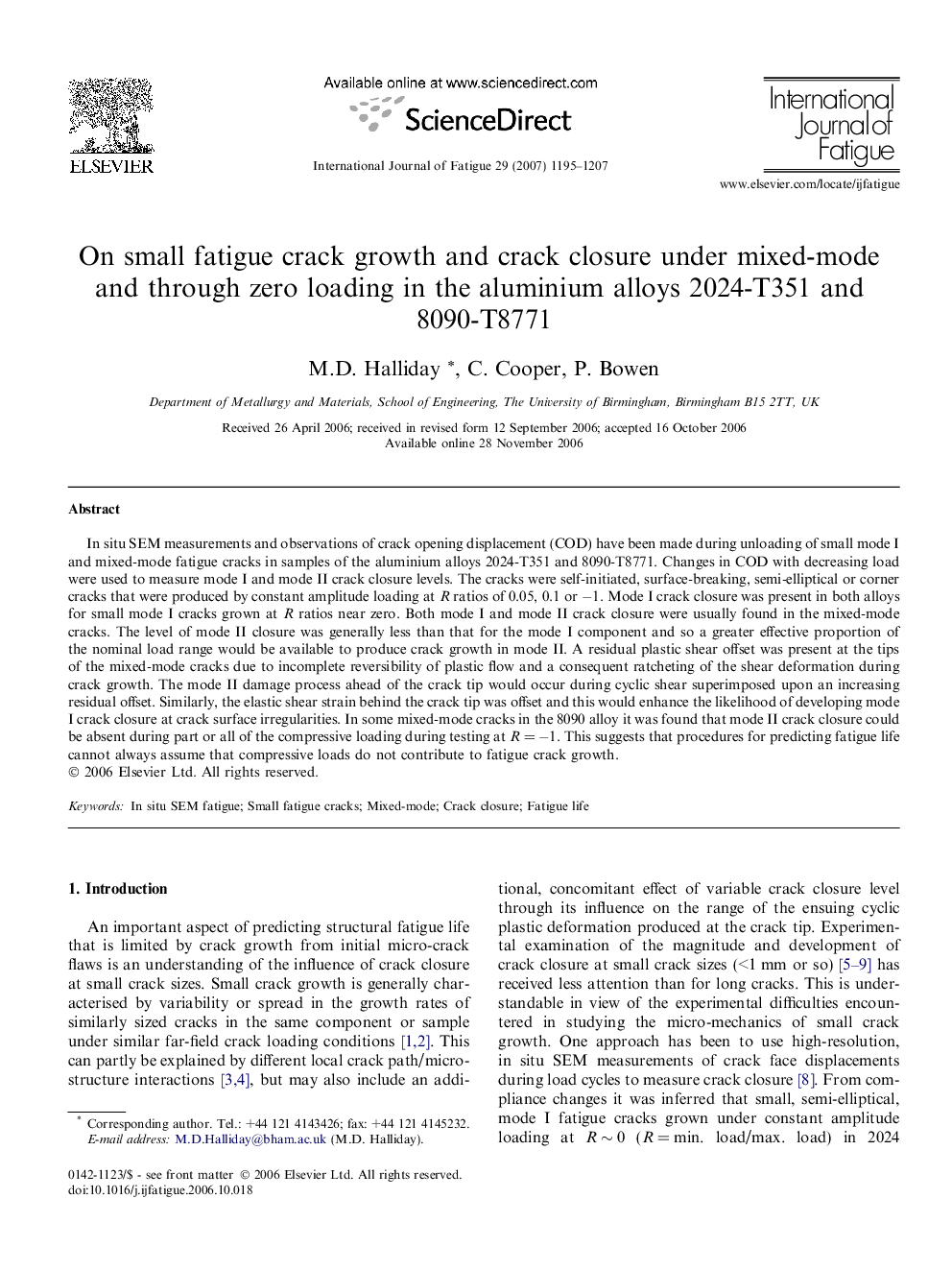| Article ID | Journal | Published Year | Pages | File Type |
|---|---|---|---|---|
| 7172778 | International Journal of Fatigue | 2007 | 13 Pages |
Abstract
In situ SEM measurements and observations of crack opening displacement (COD) have been made during unloading of small mode I and mixed-mode fatigue cracks in samples of the aluminium alloys 2024-T351 and 8090-T8771. Changes in COD with decreasing load were used to measure mode I and mode II crack closure levels. The cracks were self-initiated, surface-breaking, semi-elliptical or corner cracks that were produced by constant amplitude loading at R ratios of 0.05, 0.1 or â1. Mode I crack closure was present in both alloys for small mode I cracks grown at R ratios near zero. Both mode I and mode II crack closure were usually found in the mixed-mode cracks. The level of mode II closure was generally less than that for the mode I component and so a greater effective proportion of the nominal load range would be available to produce crack growth in mode II. A residual plastic shear offset was present at the tips of the mixed-mode cracks due to incomplete reversibility of plastic flow and a consequent ratcheting of the shear deformation during crack growth. The mode II damage process ahead of the crack tip would occur during cyclic shear superimposed upon an increasing residual offset. Similarly, the elastic shear strain behind the crack tip was offset and this would enhance the likelihood of developing mode I crack closure at crack surface irregularities. In some mixed-mode cracks in the 8090 alloy it was found that mode II crack closure could be absent during part or all of the compressive loading during testing at RÂ =Â â1. This suggests that procedures for predicting fatigue life cannot always assume that compressive loads do not contribute to fatigue crack growth.
Related Topics
Physical Sciences and Engineering
Engineering
Mechanical Engineering
Authors
M.D. Halliday, C. Cooper, P. Bowen,
